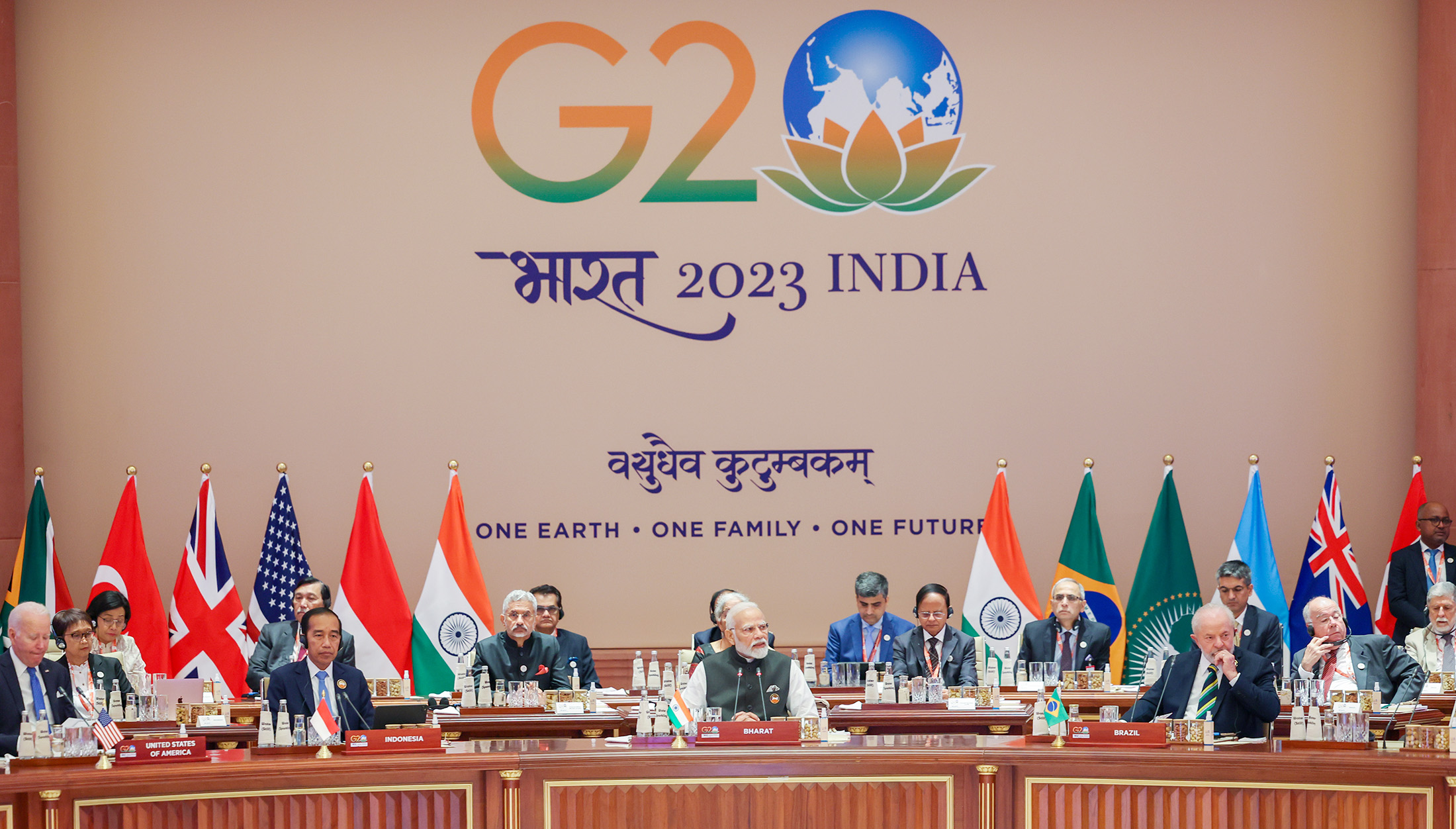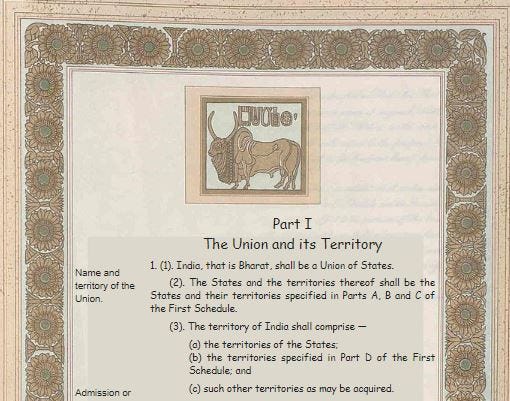India versus Bharat: Two sides of same coin
Under the radiant spotlight of the 18th G20 Summit, graciously hosted by India, a unique invitation for dinner emerged, with the host’s title as President of Bharat. This intriguing anomaly sparked contemplation, hinting at a potential shift in the nation’s official nomenclature of the country. It also led to a prolonged and highly vocal debate over the two names and their respective advantages or disadvantages. But a journey from ‘Bharat’ to ‘India’ or even back and forth between them beckons exploration, steeped in history, cultural influences, and constitutional dimensions.
Etymology Revisited: Bharat to India
The metamorphosis of ‘Bharat’ to ‘India’ is an evolution intertwined with history, culture, and geography. The Greeks, around the 6th century BCE, traversing the land, dubbed the region around the Indus River as India. Then, Megasthenes, in the 4th century BCE as an ambassador to the Mauryan Empire, meticulously documented the nation under this very name. Their encounters and observations significantly shaped the perception of this vast and diverse land. Later, the British imprint on the Indian subcontinent cannot be understated, initiating the official use of ‘India,’ replacing the indigenous ‘Bharat,’ leaving an indelible mark on the nation’s identity.
The name ‘Bharat’ resonates deeply with a sense of pride and heritage, echoing through the annals of Vedic literature and the great Hindu epics, Puranas, Ramayana, and Mahabharata. This historical significance was passionately acknowledged during the momentous naming ceremony of independent India, guided by Article 1 of the Constitution of India.
During the deliberations of the Constituent Assembly over the name of the country, M A Ayyangar suggested ‘Bharat,’ ‘Bharat Varsha’, and ‘Hindustan’ to be added to clause 1 of Article 1. However, the Chairman of the drafting committee, Dr B R Ambedkar, advocated for a combined approach, leading to the seminal phrase, “India, that is, Bharat…”
The origins of the name ‘Bharat’ remain a subject of spirited debate, an enigma echoing through the corridors of time with lack of clarity over whether it was derived from name of King Bharat or whether it traced its roots back to the Vedic era?
During the deliberations, Govind Das emphasised that ‘India’ found no mention in ancient Indian texts, while ‘Bharat’ has been enshrined in revered texts. Kamlapati Tripathi later articulated that India stands unparalleled globally, boasting a profound history and culture spanning millennia. Ultimately, Dr Ambedkar’s proposal was embraced: “India, That is, Bharat.”
And therein lies the solution to the conundrum today as well as what the founders of our Republic thought. The notation “That Is” embodies the quest for harmony, aiming to reconcile the usage of both names— ‘Bharat’ and ‘India.’
Bharat serves as the Hindi annotation, reverberating with Vedic antiquity. Simultaneously, India graciously acknowledges its association with the term coined by the Greeks, bridging historical and linguistic aspects. This dual nomenclature symbolises unity, inclusivity, and the resilient journey of India through the annals of time.
Article 1: A Constitutional Dual Overture
Article 1 of the Indian Constitution, a foundational pillar, sets forth the nomenclature of the nation. In its opening clause, it elegantly proclaims, “India, that is Bharat, shall be a Union of States”. This seemingly straightforward declaration, however, unfurls a fascinating dual nomenclature, bestowing upon the country two names – ‘India’ and ‘Bharat,’ both embraced and celebrated officially.
This constitutional provision accords the government, its administrators, and officials the liberty to wield either name in official capacities. The absence of any prescribed mandate solely for ‘India’ indicates this inherent duality, encouraging the use of ‘Bharat’ in conjunction with India. This demonstration profoundly signifies the unique character of India, a nation adorned with two official names.
The Judicial Canvas: Grappling with Dual Identity
The scenario of renaming India as Bharat has not been a novel quandary. On three distinct occasions, the Supreme Court of India grappled with this issue, revealing the complexity of our dual nomenclature.
In 2014, during the tenure of the Chief Justice of India H L Dattu, the apex court sought responses from various stakeholders on a plea urging a restraint on using ‘India’ in government and official capacities. Subsequently, in 2016, CJI T S Thakur dismissed a PIL advocating for renaming India as Bharat, reinforcing the individual’s right to choose between ‘Bharat’ and ‘India’ in their expression. In 2020, another PIL emerged, urging the removal of ‘India’ from Article 1. Chief Justice S A Bobde, in response, emphasised that both ‘Bharat’ and ‘India’ are enshrined in the Constitution and reiterated that India is already acknowledged as ‘Bharat’ within this constitutional framework.
These legal cases underscore India’s exceptional standing, being the sole nation globally endowed with dual official names as provided by its constitution. This duality extends beyond the legal realm, permeating all facets of our society, enriching the narrative of our nation.
The dual nomenclature of ‘India’ and ‘Bharat’, a harmonious blend of ancient heritage and global recognition, showcasing India’s ability to embrace its multifaceted identity. The constitutional provision of “India, that is Bharat” not only symbolises unity but also celebrates diversity in an eloquent and nuanced manner. This dual identity is not a conflict but a testimony to India’s rich past and its promising future. As the nation continues to make strides on the global stage, the names ‘India’ and ‘Bharat’ will stand as a reminder of a glorious journey rooted in heritage, yet reaching for the stars of international recognition.
(Sonal Gupta is a practicing advocate at the Supreme Court of India. She was assisted by Sanjeevani Sonalika, a law student. The views expressed here do not necessarily reflect those of Media India Group.)











